The ornate structure of Chen Clan Ancestral Hall, which sits in bustling Guangzhou, displays a rich history of Chinese architecture and culture. As a multi-purpose complex, Ancestral Hall was initially built by the Chen clan in the late Qing Dynasty so their family’s descendants could attend an academy for imperial examinations. It is now the Guangdong Folk Art Museum, which preserves region-specific artwork, intricate craftsmanship, and ancient artifacts. This article thoroughly examines the cultural significance, architectural styles, and historical background of the renowned Chen Clan Ancestral Hall, making it an essential reading for anyone seeking to delve into Guangzhou’s fascinating history and preserved heritage.
What is the Chen Clan Ancestral Hall?
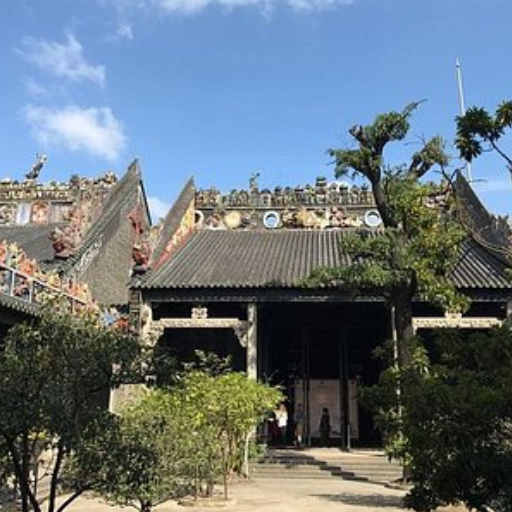
Timeline of Events involving the Chen Clan
Chen Clan Ancestral Hall also called the Chen Clan Academy, was built in 1894 during the late Qing period. The hall was financed by descendants of the Chen family throughout Guangdong Province to serve as both a venue for ancestor worship and an educational center for young scholars aspiring for the imperial examinations. The hall serves as a testament to the Chen clan’s endeavors to maintain and restore cultural heritage and family roots and promote scholarly achievement, all of which were indispensable in traditional Chinese society. It has gradually changed from its original use and has become an emblematic site for the region’s history and architectural talent.
Architectural Features of the Hall
Popularly known as the Chen Clan Hall, the building is a fusion of classical Lingnan architecture and sophisticated decorative designs. It is famous for its elaborate wood carvings, stone reliefs, and ceramic figures that decorate the roofs, beams, and columns. Some features include the highly ornamented roofs depicting auspicious symbols, mythical animals, and even folklore. The hall has 9 halls and 6 courtyards, which provide an open yet structured design . Furthermore, the elements all combine for more than just an aesthetic purpose. Each decoration portrays the cultural beliefs and symbols revered by the Chen family.
Importance of Sacred Objects as a Temple of Clan Sovereign Shrine
The Chen Clan Ancestral Hall, or the Chen Clan Academy, was originally set up to serve the primary purpose of worshiping ancestors and venerating the Chen family through a temple. It was and continues to be a place of worship and community that enabled the practice of filial piety and family harmony amongst clan members. The hall served many purposes, including an educational institution for clan members preparing for the imperial examinations, thus bestowing greater significance on heritage and culture. Like other temples, this building’s grandeur reflects the family’s social status and wealth, while its carvings and detailed decorations represent the values and goals set forth by the Chen clan during the Qing Dynasty.
How to Visit the Chen Clan Academy?
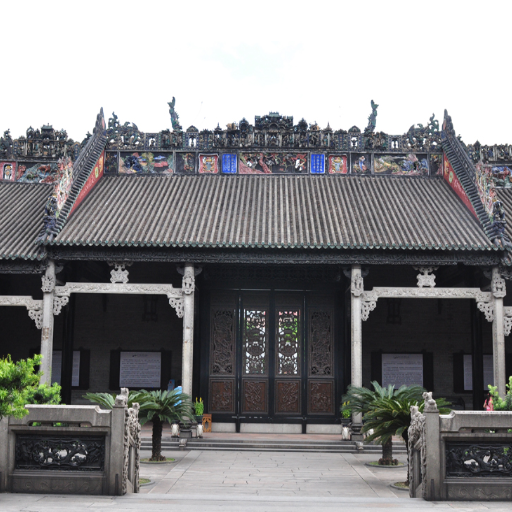
How to Get to the Chen Clan Ancestral Hall by Guangzhou Metro
In order to get to the Chen Clan Ancestral Hall, you must board the Guangzhou Metro, use Line 1, and get off at the Chen Clan Academy Station. From there, take exit D and walk to the hall about 170 meters away. The station is fitted with escalators as well as elevators for the convenience of all visitors. The service frequency on Line 1 ranges from 3 to 6 minutes during rush hours, so transportation is more than adequate. Make sure that your travel card and a token have enough balance because the fare on Line 1 is between CNY 2 and CNY 6, depending on the distance traveled.
Tours of Guangzhou with the Academy in Anticipation
- Historic and Cultural Tour: This tour incorporates the most important sites, such as the Chen Clan Ancestral Academy, Yuexiu Park, and the Temple of the Six Banyan Trees. It features traditional guided tours and provides information about the history of the fantastically rich Guangzhou and its traditional architecture.
- Guangzhou Classic Day Tour: This tour features the Chen Clan Academy alongside modern Canton Tower and Shamian Island sites. It presents aspects of both historic and modern-day Guangzhou. Usually, the itinerary involves stopping at museums and sampling local food.
- Educational and Artistic Tour: This tour focuses primarily on Guangzhou’s culture. It highlights the design, arts, and other craftsmanship displayed at the Chen Clan Academy. The tour also includes stops at the Guangzhou Museum and other significant places associated with art, giving guests an understanding of the city’s development of art.
Each tour is conducted by experienced guides who provide transport as part of the package for ease of movement.
Ideal Time for Visiting the Hall
For the people visiting Guangzhou, the ideal time to come to the Hall would be during autumn, particularly between October and December. During autumn, the weather in Guangzhou is comparatively easy with little precipitation. The temperatures during this time range from 59°F (15°C) to 77°F (25°C), which are pleasant. The Hall is best visited in the early mornings or late afternoons during weekdays to avoid the heavy crowds while providing a calm and serene setting to explore the site.
What Can You See at the Chen Clan Ancestral Hall?
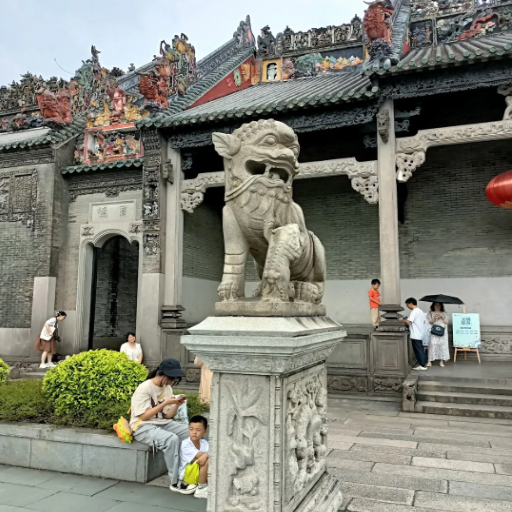
Exhibition of Folk Art of Guangdong Province
An exceptional display at the Chen Clan Ancestral Hall showcases the depth of Guangdong folk arts. Visitors can see wood carvings, ceramic sculptures, and even some ironworks that portray the essence of craftsmanship in the province. Additionally, the hall contains artifacts of delicate embroidery and other paintings, which aid in understanding Guangdong’s artistic and cultural practices. The remarkable displays combine sculpture and painting, enabling one to view the wonder and ingenuity of the region’s artisans.
Understanding the Imperial Examination History
The imperial examination, or keju, was an essential institution in China to select a candidate to hold a post in their government. It began during the Sui dynasty (581-618). It was expanded during the Song and Tang dynasties to help remedy the poorly recruited officials by instituting a system that would have candidates take an exam comprising Confucian literature, poetry, and government administration. This highly selective system ensured only the most intellectually and morally sound individuals were appointed. The imperial examination system was crucial for bureaucracy as it initiated a meritocratic civil service in China. Even after the system was outlawed in 1905, its effects are still visible in examinations and education today.
Features of the Folk Art Museum’s Building
The Folk Art Museum features strategic displays of art pieces portraying different cultures and the skills of its people. These include gaily colored pottery, finely crafted wooden statues, and regionally styled textiles. Additionally, the museum uses mobile exhibits focusing on cultural specificities, where folk practice art techniques through hands-on engagement. From a scholarly perspective, this institution is essential to preserving and appreciating traditional art and the pedagogy of community involvement.
What Are the Features of the Chen Clan Academy?
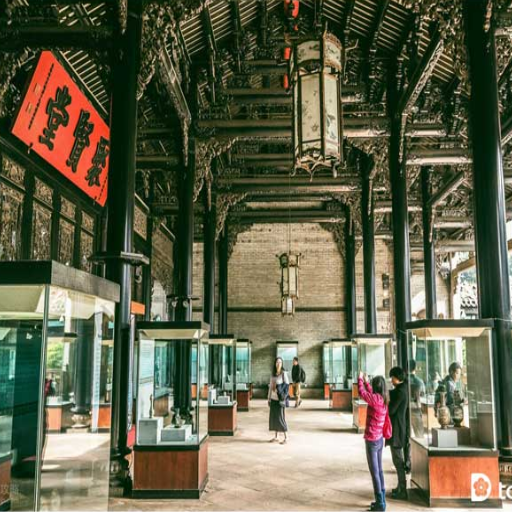
Study of Wood and Brick Carvings
The Chen Clan Academy is particularly well-known, even outside Southern China, for its exceptional craftsmanship in wood and brick carving, representing the skills mastered during the Qing Dynasty. Carved wooden beams, doors and furniture boast detailed folklore and mythological carvings. Carved bricks, admired on the walls and gateways, are constructed in an intricate blend of artistry and strength. Each of these art forms portrays an essential element of culture and the southern region’s history, highlighting a high level of technical skill achievement.
The Layout of the Nine Halls, Including Six Courtyards
The outline of the Nine Halls, including the Six Courtyards, suggests a central important architectural design order. It shows the interrelationship between space and architecture. As the sequence suggests, the nine halls in line on the central axis are arranged parallel, emphasizing structure and order. These halls are bordered by six courtyards which enhance the circulation of air and light into the building and serve as social gathering spaces. This form creates beauty and shows the value for order and utility, which is predominant in ancient Chinese architecture.
Engage with the Traditional Chinese Culture
There are many old and artistic heritages in China, including ancient structures like the Forbidden City and courtyard-style residences, refined arts such as calligraphy and Chinese paintings, and classic festivals such as the Lunar New Year and the Mid-Autumn festival. There is also Tai Chi, drinking tea, and the multiethnic cuisine of China, which reflects the Chinese thought of balance and harmony. With all these activities, one is bound to learn of China’s profound traditions and enduring modern society.
Why Visit the Chen Clan Ancestral Hall?
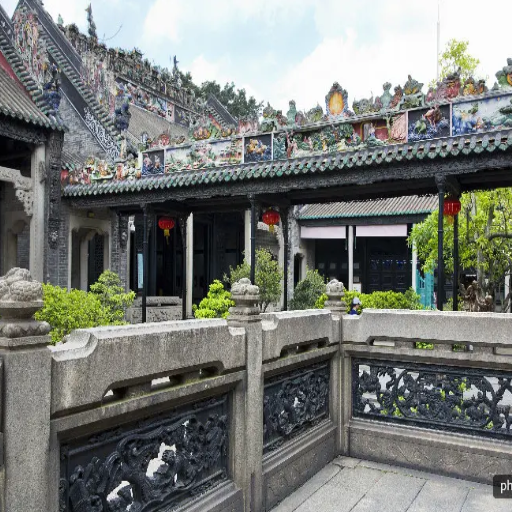
Distinct Cultural Showcase in the City of Guangzhou
The Chen Clan Ancestral Hall, or the Chen Clan Academy, is an important cultural and historical site in Guangzhou. It was a former family temple and educational center for the Chen Clan during the Qing dynasty. The place is skillfully decorated with Lingnan wood, stone, brick carving, and ceramic pieces that define Chinese artistry. Tourists can visit the museum in the hall, which contains artifacts like pottery, jade, and embroidery that reflect the history of local arts and traditions. The architectural and cultural beauty of The Chen Clan Ancestral Hall makes it a perfect spot to learn about the history and artistry of Guangzhou.
Link to the History of the Chen Family
The Chen Clan Ancestral Hall is a central feature of the Chen family’s rich educational heritage and is a testimony to their love for culture and reverence for their ancestors. Like many other prominent families, Chen’s Ancestral Hall was built in 1894, serving members of the Chen family residing in Guangdong province. It was constructed to Worship their ancestors as well as to use by junior members of the family to study for imperial exams. The hall features the agrarian wealth and power of the clan’s members in the Qing dynasty and their commitment to family value and traditions.
Engage in the Worship of the Chen Clans
Engaging in the worship of the Chen clans requires understanding their cultures, customs, and family values since the practices stem from respect for family heritage and culture. Visitors to the Chen Clan Ancestral Hall can see these features through exhibitions of tablets, pillars, complex engravements, and ceremonial utensils, which tell of the clan’s willingness to respect the higher order of life. The site hosts various events and exhibitions that highlight worship rituals like offerings and celebratory events to honor the Chen family’s ancestors. These rituals demonstrate the family connection to heritage and the Confucian beliefs the Chen family have strived to adhere to throughout the years.
What Are the Nearby Attractions to the Chen Clan Ancestral Hall?
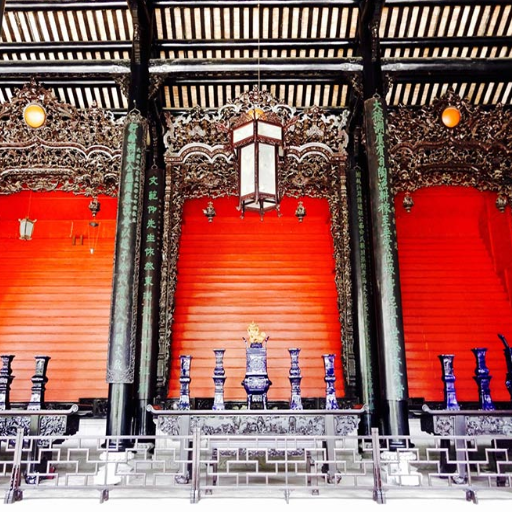
Exploring the Guangdong Folk Art Museum
The Folk Art Museum is encased within the Chen Clan Ancestral Hall and is purely dedicated to Cantonese skills and culture. The Folk Art Museum boasts numerous pieces of folk art, including ceramic sculptures, wood carving, and even intricate embroidery that represent the region’s cultural heritage. Guests can also view the Lingnan-style hall, which is known for its aesthetic beauty and artistic practicality. Also, it serves dual purpose of being a heritage building as well regarded the CMD and Chan Mew Old House. Therefore, it is a very popular site for tourists interested in culture and history.
Other Historical Sites to Visit in Guangzhou City
Guangzhou has plenty of historical places to remember the city’s deep cultural and architectural history. One important site is the Temple of the Six Banyan Trees, an ancient Buddhist temple with a prominent Chinese architectural history of over 1400 years old. The Flower Pagoda is one of its most beautiful features and stands out among many. Another significant landmark is Shamian Island, an area that contains colonial-era European-style buildings with cobbled streets emblematic of the city’s international trade history in the nineteen hundreds. Finally, the Sun Yat-sen Memorial Hall is a tribute to the stout monument of the Father of Modern China. His memorial, mixed with beautiful architecture, makes landmarks an important site to appreciate the city’s modern historical significance within China.
You can find many shopping and dining options around the Hall.
Various culinary and shopping places are provided when visiting the Sun Yat Sen Memorial Hall. For traditional Cantonese cuisine, Dong Fang Jiu Jia and Bei Yuan are more than restaurants; they are dining experiences. Street vendors and fast casual dining spots that serve dim sums, barbequed meats, and local sweets can be found in the region for more cost effective meals. These locations also offer a variety of shopping places, including Beijing Road Pedestrian Street, that is situated close by and sells local handicrafts and unbranded retail chains for souvenirs. There is surely something for everyone near this cultural landmark.
Reference sources
Frequently Asked Questions (FAQs)
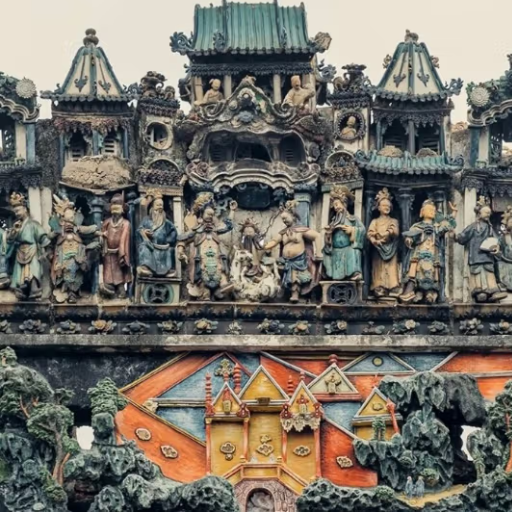
Q: What is the Chen Clan Ancestral Hall?
A: The Chen Clan Ancestral Hall, also called Chen Clan Academy, is a traditional Chinese academic complex located in Guangzhou. It serves as a cultural and genealogical gathering hall for the Chen clan.
Q: How many buildings are there in the Chen Clan Ancestral Hall complex?
A: The complex consists of 19 buildings with nine halls, showcasing the architectural beauty and design typical of South China.
Q: What can visitors expect to see at the front of the hall?
A: At the front of the gathering hall, visitors can admire intricate stone carving work, memorial tablets, and a beautifully designed stone gazebo surrounded by stone balustrades.
Q: What types of folk arts and crafts are exhibited at the Chen Clan Ancestral Hall?
A: The hall houses a variety of folk arts and crafts including traditional Chinese crafts, showcasing the cultural heritage of the Guangdong region.
Q: How is the layout of the Chen Clan Ancestral Hall designed?
A: The buildings are separated in a symmetric pattern, which is characteristic of traditional Chinese architecture and enhances the complex’s aesthetic appeal.
Q: Is the Chen Clan Ancestral Hall easily accessible via public transportation?
A: Yes, the hall is accessible via the metro station on Metro Line 1, making it convenient for visitors to reach this historical site.
Q: What is found at the back hall of the Chen Clan Ancestral Hall?
A: The back hall often showcases additional exhibits related to the clan’s history and features more memorial tablets dedicated to ancestors.
Q: Is there an industry college located near the Chen Clan Ancestral Hall?
A: Yes, there is an industry college situated nearby, which adds to the educational environment surrounding the Chen Clan Ancestral Hall.
Q: What historical significance does the Chen Clan Ancestral Hall hold?
A: The clan ancestral hall is also significant as it reflects the cultural heritage and history of the Chen family and serves as a testament to their contribution to society in Guangzhou and beyond.